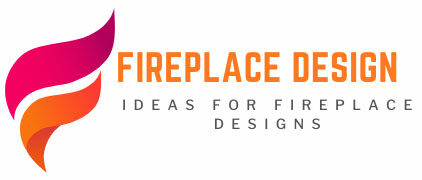A fireplace is a beautiful addition to any home, but how do you use it? A fireplace may seem difficult to operate at first glance, but don’t worry! We’ve put together the complete step-by-step guide for how to start and operate your fireplace so that you can enjoy this wonderful feature. First, let’s talk about how to light the fire.
1. Starting The Draft
Warm air rises and cold air descends, therefore hot air from a fire rises up the chimney, collecting smoke and waste gases from your home without harming you or your belongings. To start the draft, you will need to open the damper. The damper is located on the top of your chimney and is operated by a metal handle. Open the damper all the way by pulling it up as far as it will go.
If your fireplace has an air intake, also known as a throat or flu, open it now by turning the screw counterclockwise with a flathead screwdriver. If your fireplace doesn’t have an air intake, skip ahead to step four.
Now that you’ve opened the damper and air intake (if necessary), light some newspaper and place it in the firebox under the grate. You can use kindling instead of newspaper if you prefer.
2. Building The Fire
The next step in fireplace usage is to construct the fire. You can use larger pieces of firewood, but the best kindling to start with are small sticks about an inch thick.
Don’t overload your grate with too much wood at once or you’ll smother the fire and it won’t burn well. Afterward, close air intake (if applicable) by turning the screw clockwise until it is fully closed. Then open the damper all the way again by pulling up on the handle as far as it will go so that smoke goes up through the chimney instead of back in the house! 🔥🏠🌲☕️👍
If your fireplace has an air intake on the bottom, you’ll need to close it before starting the fire. To do this, turn the screw at the base of the intake counterclockwise until it’s fully closed.
Now that you have all your prep work done, it’s time to start building the fire! The best way to do this is by using small pieces of kindling instead of newspaper if you prefer.
Kindling should be about an inch thick and composed of smaller sticks. Don’t overload your grate with too much wood at once or you’ll smother the fire and it won’t burn well.

3. Lighting The Fire
The third step on how to use a fireplace is lighting the fire. You’ll need to do this by placing your kindling in the fireplace and then lighting it. Be very careful when doing this, as fires can be dangerous.
You can use a match or lighter to light the kindling. Hold the flame to the kindling until it ignites, and then wait a few minutes for the fire to catch hold of the larger pieces of wood. Don’t leave the room while your fire is burning, as it could get out of control quickly!
Once your flames are going strong, you can slowly start adjusting the air intake on your fireplace. Open it up all the way for high heat, or close it down a bit if you’re wanting a slower, steadier burn. If you have a damper, you can also adjust how much air is going to the fire.
Now that your fire is lit, you have a few options for how long it will burn. You can leave it running all evening if needed, just add some more wood every now and then as things start to cool down! In between use, be sure to check up on your fireplace by looking inside from time to time. If anything looks abnormal or out of place, contact a professional before using it again.
In order to keep your fireplace in good working condition over the years, make sure there are no cracks or damage anywhere around where flames could escape during operation. Keep an eye out for any unusual wear patterns along surfaces too – these are signs something might need repair
4. Keeping A Fire Going
When the fire you built has burned through, you’ll need to add more wood to it to keep it burning. This is how you keep the heat going in your home.
There are a few different ways to add wood to a fire, but we’ll cover the two most common ones here. The first way is called “top feeding” and it’s what you do when the fire is already burning strong. Just take a piece of wood and hold it up so that the flame from the fireplace will catch onto it. Then, slowly lower the wood into the pit until it’s resting on the embers.
The second way to add wood is called “bottom feeding.” This is what you do when there isn’t much fire left or when you’re starting a new fire from scratch. Take some kindling (small pieces of wood) and form a small teepee-like structure. Next, put some larger pieces of wood on top of the kindling and light it up. Once the kindling is burning, you can add the rest of your wood to the fireplace.
Once your fire is going strong, you’ll want to keep an eye on it to make sure it doesn’t get out of control. The best way to do this is by using a fireplace toolset. This will allow you to safely move logs around and also adjust the airflow to the fire.
One last thing: never leave a fire unattended! Make sure you always have someone keeping an eye on things so that nothing goes wrong.
Now that you know how to use a fireplace, go ahead and try it.

